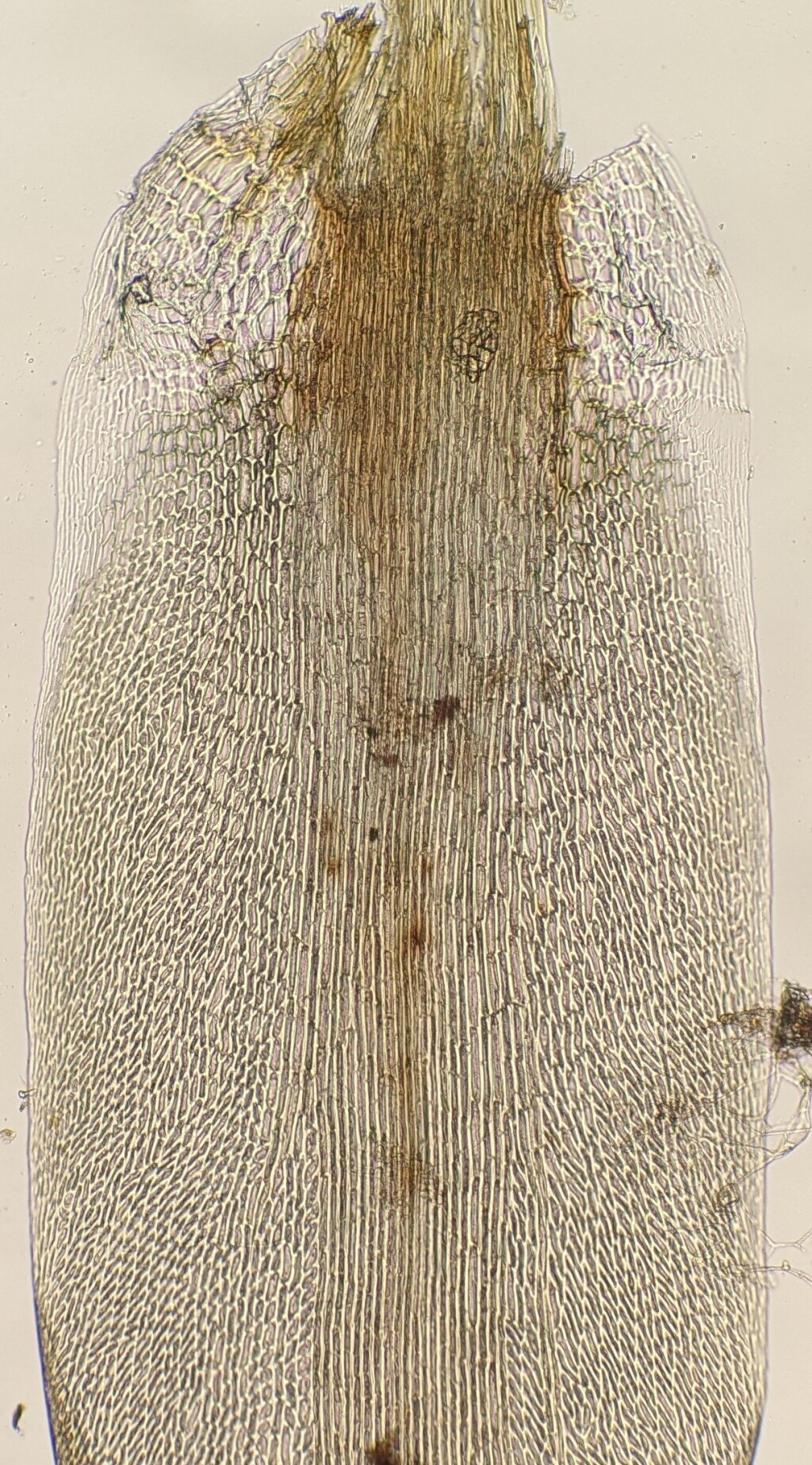Campylopus kirkii
Mitt. ex BeckettDioicous. Asexual propagules absent. Dense tufts or turfs on soil, yellowish. Stems not or sparsely branched, (0.5–) 1.5–11 cm long, uniformly foliate when sterile, ±comose when fertile, dark or blackish brown, with sparse pale rhizoids or rhizoids absent. Leaves erecto-patent to patent when moist, ±appressed to erect when dry, ovate-linear to ovate-lanceolate, 3.8–4.7 (–6) mm long, (0.5–) 1–1.3 mm wide, strongly concave to subtubulose; apex cucullate and rounded, concolorous, occasionally with a short hyaline point in comal leaves; costa occupying c. 12–20% of leaf width; margins entire or weekly toothed in apical half, plane, with 1–3 rows of narrower cells forming a weak border; laminal cells in apical half vermicular to linear, 30–75 μm long, 8–12 μm wide, conspicuously pitted; basal laminal cells chlorophyllose above alar cells, similar to laminal cells in apical half, becoming hyaline near margin; alar cells inflated, hyaline, 37–83 μm long, 15–37 μm wide, well demarcated, unistratose. Seta 5–10 mm long, golden brown to blackish brown, rough near capsule, not twisted. Capsules inclined, ovoid, 1.2–2 mm long, straight or slightly curved, yellowish or light to blackish brown, sulcate when dry. Operculum rostrate from conic base, c. 0.6 mm long. Peristome Campylopus-type.
GipP, OtP, WaP, Gold, GGr, OtR, VAlp. New Zealand, southern Africa and southern South America. Recorded in Victoria from the Otways in wet or periodically wet sites beside tracks, quarries or roads or among sedgeland or wet heath.
 Spinning
SpinningKlazenga, N. (2012). Australian Mosses Online. 35. Leucobryaceae: Campylopus. http://www.anbg.gov.au/abrs/Mosses_online/Leucobryaceae_Campylopus.pdf.


